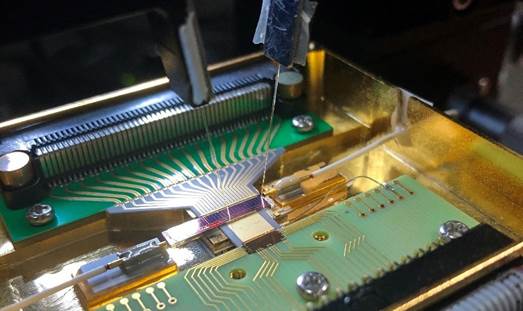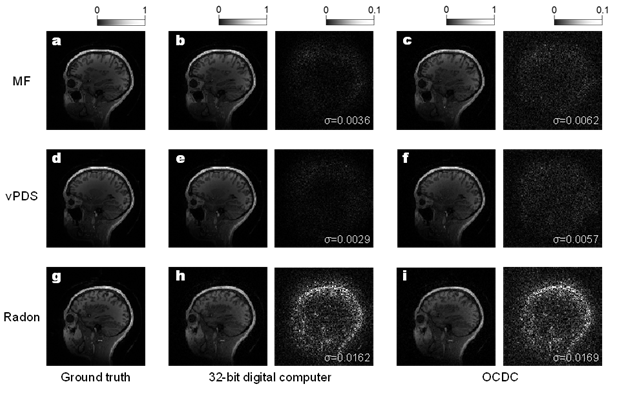- Home
- About Us
- Students
- Academics
-
Faculty
- Electrical Engineering
- Automation
- Computer Science & Engineering
- Electronic Engineering
- Instrument Science and Engineering
- Micro-Nano Electronics
- School of Software
- Academy of Information Technology and Electrical Engineering
- School of Cyber Security
- Electrical and Electronic Experimental Teaching Center
- Center for Advanced Electronic Materials and Devices
- Cooperative Medianet Innovation Center
- Alumni
-
Positions
-
Forum
News
- · Bin Dai's Team Unveils the Assembly Mechanism of β-Lactoglobulin Fibrils, Providing New Insights for the Development of Functional Nanomaterials
- · Mingyi Chen’s research group has made important progress in the field of analog-to-digital converter chips for brain-computer interface
- · Progress in the Development of Semiconductor Nanomaterials to Activate Pyroptosis for Cancer Therapy
- · Jiamiao Yang’s team achieved the high precision optoelectronic reservoir computing based on complex-value encoding
- · Significant Advancements in Resonator-Enhanced Quantum Sensing Achieved by Zenguihua's Team at the School of Sensing Science and Engineering
Prof. Weiwen Zou’s team makes a breakthrough in the field of optical neural network computing chip
Recently, Prof. Weiwen Zou's team at the State Key Laboratory of Advanced Optical Communication Systems and Networks has made a breakthrough in the field of optical intelligent computing. The research work has been published in Light: Science & Applications titled Optical coherent dot-product chip for sophisticated deep learning regression (URL). The work has successfully demonstrated an optical coherent dot-product computing chip with the ability to employ complex neural networks. It is the first to achieve high-precision medical image reconstruction tasks on an optical intelligent computing chip.
Background
With the wide spreading of intelligent applications, the complexity of intelligent algorithms represented by neural networks has shown explosive growth, and the huge arithmetic power demand has put great pressure on the existing digital processors. It is urgent to open up new computing hardware to alleviate the contradictory relationship between the growth rate of Moore's law and the growth rate of arithmetic power demand. In recent years, optical neural network computing technology has received extensive attention from international academics. Optical systems with computational clock frequencies that can exceed tens of GHz (10^9 Hz) and static power-free characteristics are considered as a potential way to realize next-generation high-speed low-power intelligent computing accelerators. Although various optical intelligent computing solutions reported have successfully verified the capability of high-speed and low-power computing, the demonstrated tasks are mostly simple classification tasks, and there is a large gap for practical applications.
Innovative achievements
In 2016, Prof. Zou's team focused on the research of intelligent optical signal processing technology and took the lead in verifying that intelligent algorithms can effectively improve the performance of microwave photonic signal processing systems, and the related results were published in the journal Light: Science & Applications in 2019 (https://doi.org/10.1038/s41377-019-0176-4) and received wide attention in the field of microwave photonics. Based on this, the team targets the goal of high-speed and efficient intelligent computing using optical systems and successively proposes new system architectures such as optical dot product kernel and optical convolutional block technology. These architectures solve the problems of algorithm execution scale and input port energy efficiency, respectively, laying the principle foundation for the development and application of optical intelligent computing chips.

Figure 1 Optical coherent dot product chip and its packaging module
This time, Prof. Zou's team and partners (Peking University and Institute of Semiconductors, CAS) designed and developed an optical coherent dot product core computing chip. The chip breaks through the key technology of coherent regulation of arrayed optical devices and successfully realizes the real-valued computation. With the help of a novel on-chip feedback control algorithm, the numerical accuracy of optical calculations has been significantly improved. Compared with previous work, the breakthrough in numerical domain completeness and numerical accuracy of the chip makes it capable of performing complex intelligent tasks.

Figure 2 Comparison of optical coherent dot product chip reconstruction results with that of a digital computer
Using a medical image reconstruction task as a validation, the research team successfully ran the AUTOMAP (for general-purpose image reconstruction) neural network model on the chip, and the quality of the reconstructed images approached the ideal level of a 32-bit computer. This work not only pushes the research field of optical neural networks to overcome practical application problems, but also provides new ideas for next-generation intelligent computing technology. The further improvement of the device integration scale of the chip is expected to realize a higher speed and lower power consumption optical neural network processor, which can alleviate the contradiction between the sharp increase of intelligent computing power demand and the limited computing power of traditional hardware.
Paper link: https://www.nature.com/articles/s41377-021-00666-8
-
Students
-
Faculty/Staff
-
Alumni
-
Vistors
-
Quick Links
